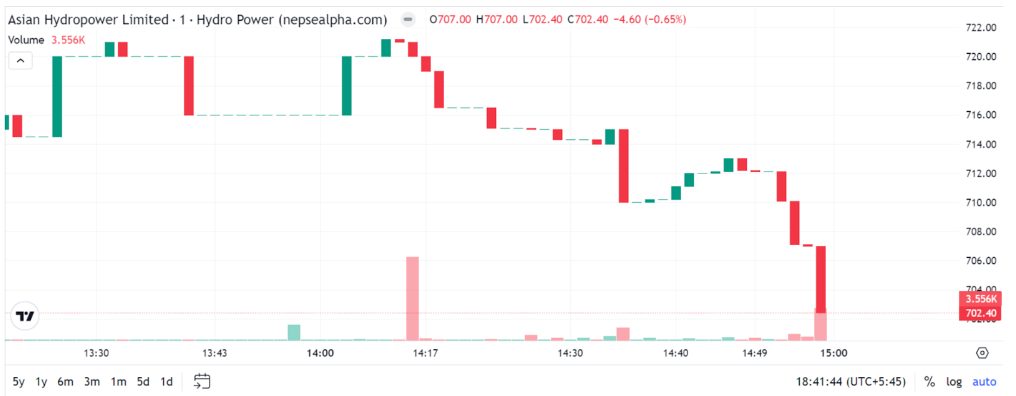Day Trading in Nepal



Buying and selling financial instruments within a single trading day, has gained popularity worldwide, and Nepal is no exception. With the rise of online trading platforms and increased access to financial markets, more Nepalis are exploring day trading to supplement their income or build a full-time career.
Looking to start day trading in Nepal? This guide has you covered.
Quick Introduction
- The Nepal Stock Exchange (NEPSE) is the only stock exchange in the country, and the government owns 58.66%. Most day trading activities focus primarily on equities. 244 companies are listed and the total market capitalization is roughly $36 billion.
- The securities market in Nepal is primarily overseen by The Securities Board of Nepal (SEBON), extending to day trading. The Nepal Rastra Bank (NRB) regulates the country’s forex market. SEBON is classified as an ‘orange tier’ regulator in line with DayTrading.com’s Regulation & Trust Rating.
- For individual investors in Nepal, the short-term capital gains tax rate is generally 7.5% of the profit made from the sale of securities within a year. Taxes are payable to the Inland Revenue Department.
Top 4 Brokers in Nepal
After our extensive tests, these 4 platforms stand out as the clear front runners for day traders in Nepal:
Day Trading Platforms in Nepal
What Is Day Trading?
Day trading refers to buying and selling financial instruments within the same day. Traders capitalize on small market price fluctuations by making quick trades, often holding positions for just minutes or hours, and close their positions by the end of the day to avoid overnight risks.
Nepalese investors have access to a range of local and global markets, notably equities listed on the NEPSE. Short-term traders in the country typically focus on sectors like banking, finance, and hydropower; these tend to have higher trading volumes and more price movement, essential for day trading.
Importantly, the Nepalese stock market is volatile, with stock prices often influenced by local economic conditions, political events, and investor sentiment. Liquidity varies, making it crucial for day traders to choose trades carefully.
Nepalese investors may also want to deal in commodities like coffee (the country produces speciality coffee complementing the global trend towards fair-trade coffee).
Forex trading in Nepal faces tight restrictions and the Nepalese Rupee (NPR) is not widely available on trading platforms in our experience.
Is Day Trading Legal In Nepal?
Day trading is legal in Nepal and regulated by The Securities Board of Nepal (SEBON), which oversees all securities trading on The Nepal Stock Exchange (NEPSE).
As long as traders comply with the rules and regulations set by SEBON and the NEPSE, they can engage in short-term trading.
To legally day trade in Nepal, individuals must open a trading account with a licensed brokerage firm. These brokers provide access to the NEPSE and must follow strict guidelines set by SEBON.
Traders must comply with all market rules, including those related to market manipulation and insider trading. Engaging in illegal activities can result in penalties, including fines and the suspension of trading privileges.
Is Day Trading Taxed In Nepal?
Day trading is taxed in Nepal with annual income tax returns submitted to the Inland Revenue Department.
Profits earned from day trading are generally subject to capital gains tax on gains made from the sale of securities. Tax rates vary depending on the holding period of the securities and the type of trader.
Short-term capital gains refer to the profits earned from selling securities held for less than one year. For individual traders, the short-term capital gains tax rate is generally 7.5% of the profit made from sales.
Since day trading involves buying and selling securities within the same day, all profits from day trading will likely be considered short-term capital gains and taxed at this rate.
Some brokerage firms in Nepal may deduct a portion of the capital gains tax at the source when settling transactions, such as tax deduction at source (TDS). This is then adjusted when the trader files their tax return.
Maintaining accurate records of all your trades is vital to calculate the gains and corresponding tax liability correctly.In some cases, losses from day trading can be deducted from other capital gains, which may reduce your overall tax liability. However, the rules can be complex, so I recommend consulting a tax professional familiar with the requirements in Nepal.
Getting Started
Starting day trading in Nepal involves several key steps:
- Set up a brokerage account: Select a licensed brokerage in Nepal that offers access to the NEPSE and an online trading platform. Complete the necessary paperwork to open a trading account. You’ll need to provide identification documents like a copy of your Nepalese Citizenship Certificate and a bank account linked to your trading account. Once your account is set up, familiarize yourself with the platform. Practice placing orders, setting stop losses, and monitoring market prices.
- Fund your account: Transfer Nepalese Rupees for day trading into your brokerage account. Determine how much capital you’ll allocate per trade and set aside some of your funds as a reserve to cover potential losses. Our investigations show brokers with NPR accounts are rare, though Exness is one top-rated option that makes deposits hassle-free for Nepalese traders.
- Start trading: Start with small trades to minimize risk as you gain experience. Keep aware of market news, economic reports, and events that might impact the NEPSE. Use technical analysis to identify potential trading opportunities. Be realistic about what you can achieve based on your capital and experience. Create rules to enter and exit trades, how much risk to take per trade, and how you’ll handle losses.
A Day Trade In Action
Let’s explore how a short-term trade in Nepal could play out…
Nepal has potentially unlimited amounts of Hyrdro-power. Asian Hydropower Limited (AHL) is one of Nepal’s premier hydroelectric power creators. Its IPO occurred in February 2023.
It has massive potential. However, due to the emerging nature of the industry and as a relatively new entrant, the stock is often subject to significant swings based on any news, positive or negative.
Trade Analysis
I research the fundamentals and technical analysis whenever I trade ‘exotic’ stocks. I have a brief fundamental checklist, some of which I’ve listed below.
- The market capitalization was around NPR 2,388,160,000.00, equivalent to approximately $18m.
- The 52-week high was 904; the 52-week low was 273; the 120-day average was 537.
- Broker sentiment had been bearish over recent days before my trade.
- The P/E ratio was negative, a common occurrence for newly floated entities on global stock markets awaiting the publication of several years’ earnings data.

Trade Execution
I analyze the fundamentals before beginning any technical analysis.
On naked charts, I primarily look for conventional candlestick formations. Towards the end of the trading day, the bullish daily trend and momentum appeared to exhaust, as evidenced by the stock printing lower highs.
The reversal of the daily trend then became apparent as two closed bearish candles formed. I shorted the stock and ensured a stop-loss order was in place.
My order/deal ticket displayed the following details:
- Entry price 707.
- Stop loss order price 710.
- Take profit limit order 700.
The take profit limit order was not executed as the price level 700 wasn’t reached. Instead, I manually closed the trade at 702 at the end of the trading day.
Bottom Line
Starting day trading in Nepal requires careful preparation, continuous education, and disciplined execution. Following the steps outlined in this guide and remaining adaptable can help build a solid foundation for your active trading journey.
Remember, success in day trading doesn’t come overnight, and managing risk is as important as making profits.
To get started, browse DayTrading.com’s selection of the top brokers for day trading in Nepal.
Recommended Reading
Article Sources
- The Securities Board of Nepal (SEBON)
- The Nepal Stock Exchange (NEPSE)
- The Nepal Rastra Bank (NRB)
- Capital Gains Tax - Act Nepal
- Nepal Income Tax - Inland Revenue Department
- Asian Hydroelectic Limited (AHL)
The writing and editorial team at DayTrading.com use credible sources to support their work. These include government agencies, white papers, research institutes, and engagement with industry professionals. Content is written free from bias and is fact-checked where appropriate. Learn more about why you can trust DayTrading.com



